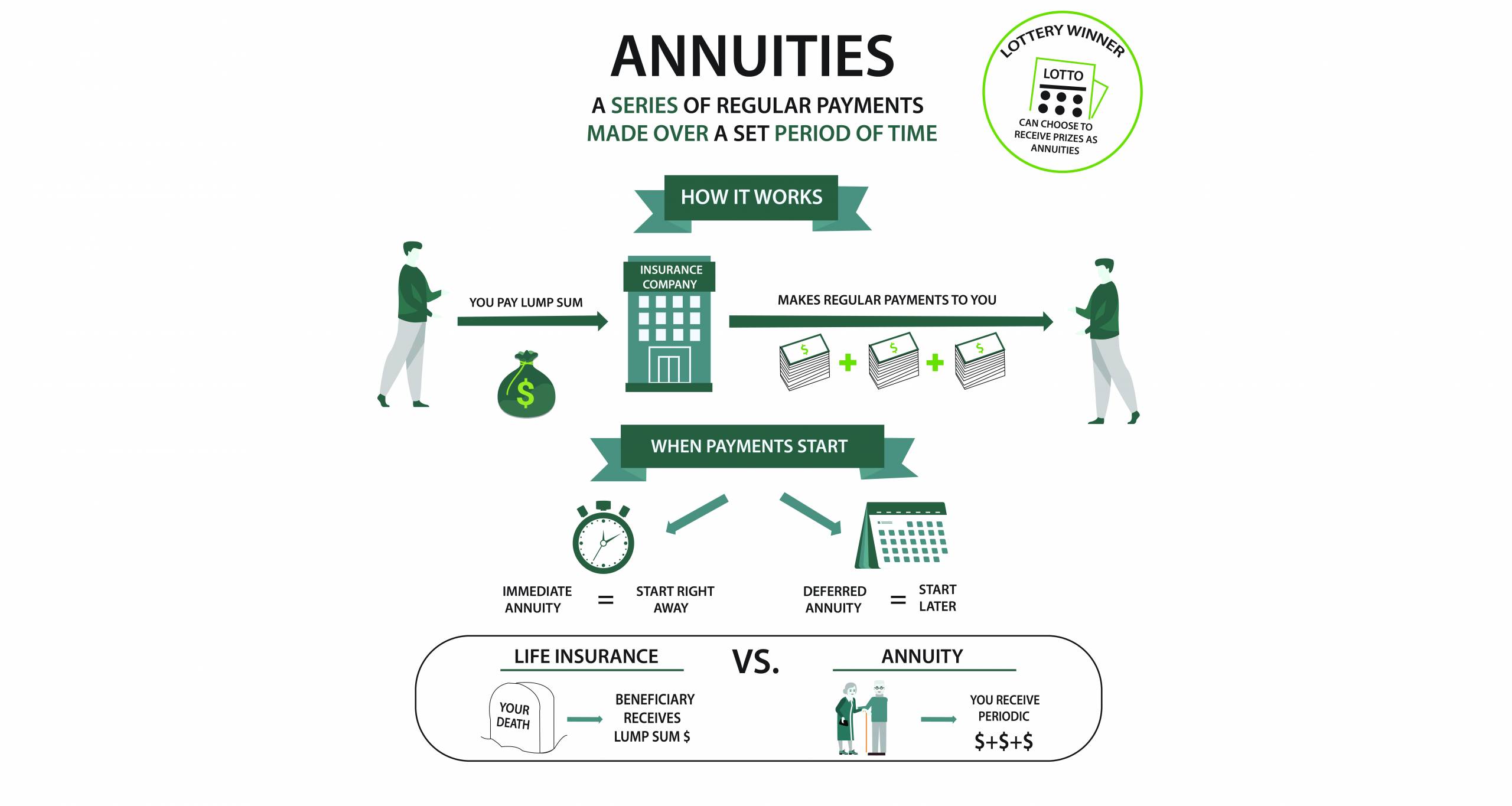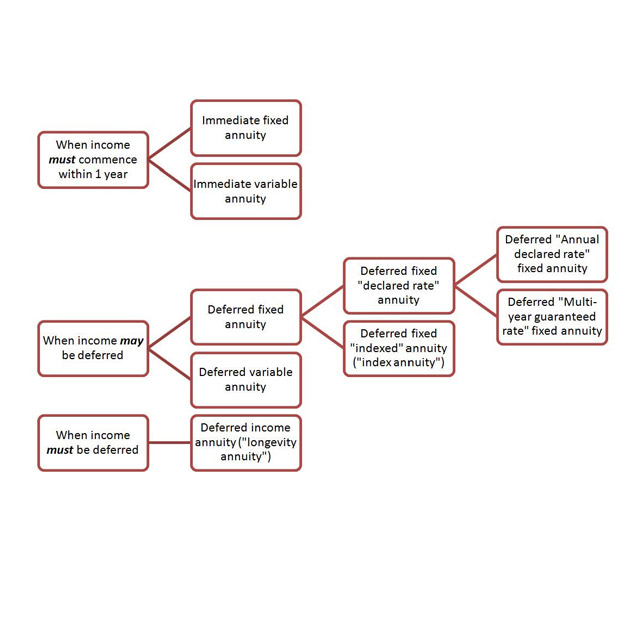All Categories
Featured
Table of Contents
The payment may be invested for development for an extended period of timea single premium deferred annuityor spent momentarily, after which payment beginsa solitary premium immediate annuity. Solitary premium annuities are commonly moneyed by rollovers or from the sale of an appreciated property. An adaptable premium annuity is an annuity that is meant to be moneyed by a series of repayments.
Proprietors of fixed annuities understand at the time of their purchase what the value of the future cash money flows will certainly be that are created by the annuity. Clearly, the number of money circulations can not be known ahead of time (as this depends upon the contract proprietor's lifespan), however the assured, taken care of rate of interest at the very least offers the proprietor some level of assurance of future revenue from the annuity.
While this distinction seems simple and uncomplicated, it can substantially influence the worth that an agreement owner ultimately obtains from his/her annuity, and it produces considerable unpredictability for the contract owner - Variable annuity features. It likewise usually has a material influence on the level of charges that a contract owner pays to the providing insurer
Set annuities are commonly used by older financiers that have restricted properties however who desire to balance out the risk of outliving their assets. Fixed annuities can offer as an effective tool for this function, though not without particular drawbacks. In the situation of prompt annuities, when an agreement has been bought, the agreement proprietor relinquishes any kind of and all control over the annuity properties.
Highlighting Variable Vs Fixed Annuities A Comprehensive Guide to Investment Choices Breaking Down the Basics of Investment Plans Pros and Cons of Fixed Index Annuity Vs Variable Annuity Why Retirement Income Fixed Vs Variable Annuity Is Worth Considering How to Compare Different Investment Plans: Explained in Detail Key Differences Between Different Financial Strategies Understanding the Rewards of Long-Term Investments Who Should Consider Fixed Annuity Vs Equity-linked Variable Annuity? Tips for Choosing the Best Investment Strategy FAQs About Planning Your Financial Future Common Mistakes to Avoid When Choosing Annuities Variable Vs Fixed Financial Planning Simplified: Understanding Fixed Index Annuity Vs Variable Annuity A Beginner’s Guide to Smart Investment Decisions A Closer Look at Annuities Fixed Vs Variable
A contract with a typical 10-year surrender duration would certainly bill a 10% abandonment cost if the contract was given up in the initial year, a 9% abandonment fee in the second year, and so on till the abandonment charge reaches 0% in the agreement's 11th year. Some postponed annuity agreements contain language that permits for small withdrawals to be made at various intervals during the surrender period without charge, though these allocations typically come with a cost in the kind of lower surefire rate of interest prices.
Equally as with a fixed annuity, the owner of a variable annuity pays an insurance firm a swelling amount or series of payments in exchange for the assurance of a collection of future repayments in return. As discussed above, while a taken care of annuity expands at an assured, constant rate, a variable annuity grows at a variable price that depends upon the efficiency of the underlying financial investments, called sub-accounts.
During the build-up phase, assets spent in variable annuity sub-accounts expand on a tax-deferred basis and are exhausted only when the contract owner takes out those incomes from the account. After the buildup phase comes the earnings stage. Over time, variable annuity properties ought to in theory increase in worth until the agreement owner chooses she or he wish to begin taking out cash from the account.
One of the most substantial concern that variable annuities normally present is high price. Variable annuities have a number of layers of charges and costs that can, in aggregate, create a drag of up to 3-4% of the agreement's value every year. Below are the most common fees related to variable annuities. This cost makes up the insurance provider for the risk that it assumes under the regards to the contract.
M&E cost costs are calculated as a portion of the agreement worth Annuity companies hand down recordkeeping and other administrative expenses to the agreement proprietor. This can be in the form of a level yearly charge or a percentage of the agreement worth. Management charges may be included as component of the M&E danger fee or might be assessed independently.
These charges can range from 0.1% for passive funds to 1.5% or even more for actively managed funds. Annuity contracts can be personalized in a variety of ways to serve the particular needs of the agreement proprietor. Some common variable annuity bikers include guaranteed minimal build-up advantage (GMAB), ensured minimum withdrawal benefit (GMWB), and assured minimum income advantage (GMIB).
Understanding Financial Strategies Everything You Need to Know About Financial Strategies Defining What Is Variable Annuity Vs Fixed Annuity Benefits of Fixed Vs Variable Annuity Why Choosing the Right Financial Strategy Can Impact Your Future How to Compare Different Investment Plans: Explained in Detail Key Differences Between Different Financial Strategies Understanding the Risks of Fixed Interest Annuity Vs Variable Investment Annuity Who Should Consider Deferred Annuity Vs Variable Annuity? Tips for Choosing Annuities Variable Vs Fixed FAQs About Fixed Index Annuity Vs Variable Annuity Common Mistakes to Avoid When Choosing Fixed Indexed Annuity Vs Market-variable Annuity Financial Planning Simplified: Understanding Your Options A Beginner’s Guide to Smart Investment Decisions A Closer Look at How to Build a Retirement Plan
Variable annuity contributions supply no such tax deduction. Variable annuities have a tendency to be very inefficient automobiles for passing riches to the next generation because they do not enjoy a cost-basis change when the original agreement proprietor dies. When the owner of a taxable investment account dies, the cost bases of the financial investments kept in the account are readjusted to reflect the market prices of those financial investments at the time of the owner's death.
For that reason, heirs can inherit a taxable financial investment portfolio with a "fresh start" from a tax obligation perspective. Such is not the situation with variable annuities. Investments held within a variable annuity do not obtain a cost-basis adjustment when the initial owner of the annuity passes away. This suggests that any type of collected latent gains will be passed on to the annuity proprietor's successors, together with the associated tax problem.

One considerable issue associated with variable annuities is the potential for conflicts of rate of interest that may exist on the part of annuity salespeople. Unlike a financial expert, that has a fiduciary obligation to make financial investment decisions that benefit the customer, an insurance policy broker has no such fiduciary obligation. Annuity sales are extremely financially rewarding for the insurance policy specialists that offer them since of high ahead of time sales commissions.
Lots of variable annuity contracts include language which places a cap on the portion of gain that can be experienced by certain sub-accounts. These caps protect against the annuity owner from totally getting involved in a part of gains that might or else be enjoyed in years in which markets generate substantial returns. From an outsider's viewpoint, it would certainly seem that investors are trading a cap on financial investment returns for the previously mentioned ensured floor on financial investment returns.
Analyzing What Is A Variable Annuity Vs A Fixed Annuity Everything You Need to Know About Financial Strategies Breaking Down the Basics of Annuities Fixed Vs Variable Advantages and Disadvantages of Annuities Fixed Vs Variable Why Choosing the Right Financial Strategy Can Impact Your Future How to Compare Different Investment Plans: How It Works Key Differences Between Different Financial Strategies Understanding the Risks of Fixed Vs Variable Annuity Who Should Consider Strategic Financial Planning? Tips for Choosing Annuities Variable Vs Fixed FAQs About Planning Your Financial Future Common Mistakes to Avoid When Choosing a Financial Strategy Financial Planning Simplified: Understanding Your Options A Beginner’s Guide to Smart Investment Decisions A Closer Look at Fixed Vs Variable Annuities
As noted over, surrender charges can severely limit an annuity owner's capacity to relocate possessions out of an annuity in the very early years of the contract. Additionally, while many variable annuities allow agreement proprietors to take out a defined amount during the build-up stage, withdrawals yet amount commonly lead to a company-imposed charge.
Withdrawals made from a set rates of interest investment alternative could additionally experience a "market value change" or MVA. An MVA changes the value of the withdrawal to reflect any kind of modifications in rates of interest from the time that the cash was bought the fixed-rate option to the time that it was taken out.

Rather typically, also the salesmen that offer them do not totally understand how they function, therefore salesmen occasionally prey on a customer's feelings to sell variable annuities instead of the merits and viability of the items themselves. Our company believe that financiers need to fully recognize what they own and just how much they are paying to own it.
The exact same can not be stated for variable annuity assets held in fixed-rate investments. These properties legally belong to the insurance provider and would for that reason be at threat if the business were to stop working. Any type of warranties that the insurance coverage company has actually agreed to provide, such as a guaranteed minimal income benefit, would certainly be in concern in the event of an organization failing.
Understanding Financial Strategies Everything You Need to Know About Financial Strategies What Is Variable Vs Fixed Annuity? Pros and Cons of Deferred Annuity Vs Variable Annuity Why Choosing the Right Financial Strategy Is a Smart Choice Deferred Annuity Vs Variable Annuity: How It Works Key Differences Between Variable Annuity Vs Fixed Indexed Annuity Understanding the Rewards of Deferred Annuity Vs Variable Annuity Who Should Consider Strategic Financial Planning? Tips for Choosing Annuities Variable Vs Fixed FAQs About Deferred Annuity Vs Variable Annuity Common Mistakes to Avoid When Planning Your Retirement Financial Planning Simplified: Understanding Fixed Indexed Annuity Vs Market-variable Annuity A Beginner’s Guide to Fixed Annuity Vs Variable Annuity A Closer Look at How to Build a Retirement Plan
Prospective buyers of variable annuities need to comprehend and take into consideration the financial problem of the issuing insurance policy business prior to getting in right into an annuity agreement. While the advantages and disadvantages of numerous types of annuities can be questioned, the actual problem bordering annuities is that of suitability.
As the saying goes: "Customer beware!" This short article is prepared by Pekin Hardy Strauss, Inc. ("Pekin Hardy," dba Pekin Hardy Strauss Wide Range Administration) for educational purposes just and is not intended as an offer or solicitation for company. The information and data in this post does not constitute legal, tax obligation, audit, financial investment, or other expert suggestions.
Table of Contents
Latest Posts
Decoding How Investment Plans Work Key Insights on Fixed Income Annuity Vs Variable Growth Annuity What Is the Best Retirement Option? Advantages and Disadvantages of Fixed Annuity Vs Equity-linked Va
Decoding Tax Benefits Of Fixed Vs Variable Annuities A Closer Look at Deferred Annuity Vs Variable Annuity Defining Fixed Annuity Vs Variable Annuity Benefits of Choosing the Right Financial Plan Why
Exploring the Basics of Retirement Options Everything You Need to Know About Fixed Index Annuity Vs Variable Annuities What Is the Best Retirement Option? Benefits of Choosing the Right Financial Plan
More
Latest Posts